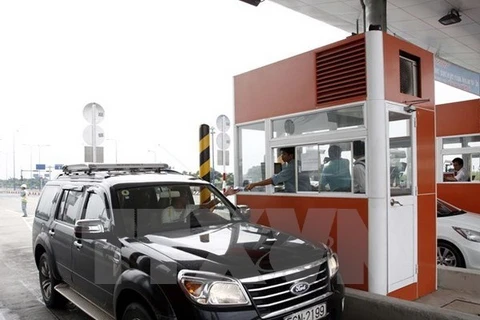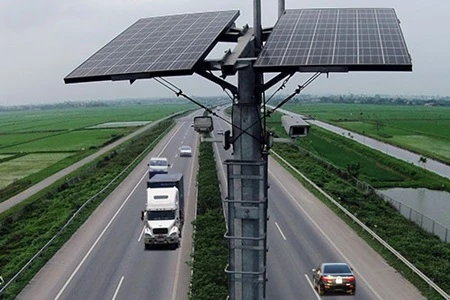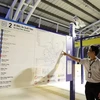 The transport ministry wants electronic toll collection systems installed at all toll booths nationwide from 2020 (Photo: VNA)
The transport ministry wants electronic toll collection systems installed at all toll booths nationwide from 2020 (Photo: VNA) Hanoi (VNA) – The transport ministry wants electronic toll collection systems (ETCs) installed at all toll booths nationwide from 2020, to end delays and cut costs, Deputy Minister Nguyen Hong Truong said.
The ministry has asked investors to install the systems on National Highway 1 and 14 before June 30. The system will be installed at 25 more toll stations along National Highway 1 and Ho Chi Minh Highway after that.
The system first became operational at three toll stations in Quang Binh, Nghe An and Dak Lak on a trial basis.
It uses the radio frequency identification (RFID) technology, which refers to a wireless system comprising two components of e-tags and readers.
In order to pay a toll through ETCs, vehicle owners will be issued an e-tag that is attached to the inside area of the front windscreen of a vehicle and an account for fee collection. Drivers can transfer money to the account via Internet banking or at transaction points.
When the vehicle passes a toll collection lane, the RFID system installed at the toll station will activate a camera that will photograph the vehicle's number plate while reading the RFID tags.
ETCs can save a lot of time for drivers and curb congestion, as drivers will no longer have to stop their vehicles and pay fees manually as is done currently.
During the trial period, manual toll collection will continue, meaning that paper cards and paper tickets will still be sold.
Experts estimated that the electronic toll collection system could help to reduce operating costs by about 2.8 trillion VND (125 million USD) each year, in comparison with the traditional toll gates.-VNA























